Whether you need to shed a few pounds, lower your blood pressure, or simply increase your energy levels, the best way to start is by eating healthier. Nutrition plays pretty much the biggest role in your overall health, and by improving your diet with a few basic changes, everything else, from exercising and focusing at work, to sleeping peacefully and relaxing, will be much easier. Here are some changes you can make and advice you can start following today to start eating healthier…

Stock Your Fridge With Healthy Foods
The first thing you should do on your journey to healthy eating is to reduce unhealthy temptations within easy reach in your home, while also ensuring you have plenty of healthy foods available. This will help you avoid a hungry shop run, which almost always ends with regrettable impulse purchases!
Start with your fridge, by stocking it with a variety of healthy, colorful natural whole foods with a variety of nutrients. Think protein, antioxidants, vitamins, minerals, fiber and healthy fats. A good example of a healthily stocked fridge might include…

- Unsweetened natural yogurt (healthy fat, protein, probiotic)
- Unsweetened almond milk (healthy fat)
- Green leafy vegetables, like spinach, kale and collard greens (vitamins, minerals, fiber, calcium)
- Colored vegetables of your choice. For example, bell peppers, carrots, broccoli, cauliflower (vitamins, minerals, fiber, antioxidants)
- Eggs, which can be kept in the fridge or on the bench, depending on personal preference (protein, vitamins)
- Colorful range of fruits of your choice (depending on what’s in season). Examples might include oranges, apples, kiwifruit, grapefruit, berries, watermelon, cantaloupe – the list goes on! (vitamins, minerals, antioxidants, fiber). Again, some of these can be kept in a fruit bowl instead of the fridge if you don’t like them to be too cold.
- Maple syrup to have on hand and use instead of sugar (vitamins, minerals)
- Healthy (preferably homemade) dressings and sauces. Think of blends using different bases, like apple cider vinegar, balsamic, olive oil, garlic and chili.
- Natural, lean meats if you are not vegetarian. For example, poached chicken breast, grilled turkey breast or roast beef – definitely avoid processed meats (protein, iron)
This is just an example guide – everyone stocking their fridge will have different tastes, but remember to fill it with whole foods, or foods with very few ingredients, keep it colorful, and keep it varied.

Stock Your Pantry With Healthy Ingredients
This is a continuation of the last tip, extending into the dry and canned foods section. The pantry is arguably just as important as the fridge, because this is where you can keep non-perishables, like canned beans and dry baking ingredients. Here is an example of a healthily stocked pantry…
- Ground almonds or ground hazelnuts, to use instead of flours in gluten-free and healthy desserts (healthy fats, vitamins, minerals, fiber)
- Oats for baking or breakfast (complex carbohydrates, fiber, minerals)
- Spices, such as turmeric, cumin, coriander, cayenne pepper, cinnamon, fennel and fenugreek. This gives you plenty of flavor options to make an enormous array of dishes, including Ayurvedic-inspired and homemade Chinese food (calcium, minerals, vitamins, fiber)
- Dried herbs like basil, oregano, bay leaves, rosemary, sage, thyme and tarragon. These are great for Italian cooking, roasting vegetables, or adding to salads (vitamins, minerals)
- Whole grains, like brown rice, wild rice, buckwheat, quinoa, barley, bulgur, millet and freekeh (complex carbohydrates, fiber, vitamins, minerals)
- Seeds, like chia seeds, poppy seeds, sesame seeds, linseeds, sunflower seeds and pumpkin seeds. You can use these to sprinkle on salads, fruit and yogurt, or as an ingredient in smoothies and baked goods (fiber, vitamins, minerals)
- Stevia, to use as a replacement for sugar and in baking
- Canned beans stored in water (fiber, protein, minerals, antioxidants)
- Raw cacao powder or 100% cocoa powder for baking and smoothies (antioxidants, vitamins, minerals)
- Matcha powder to use in smoothies (antioxidants)
- Nuts (protein, healthy fats, fiber, vitamins, minerals)
- Protein powder for baking and smoothies or protein shakes (protein, unsurprisingly!)
- Dates, for baking and smoothies. They make a great sugar and butter replacement.
- Onions, garlic and ginger (vitamins, anti-inflammatory properties, minerals)
- Nut butter, like almond or hazelnut. Make sure it’s 100%. These are great for snacking with vegetable sticks, adding to smoothies, or using as an ingredient in raw desserts (fiber, protein, healthy fats, vitamins, minerals)
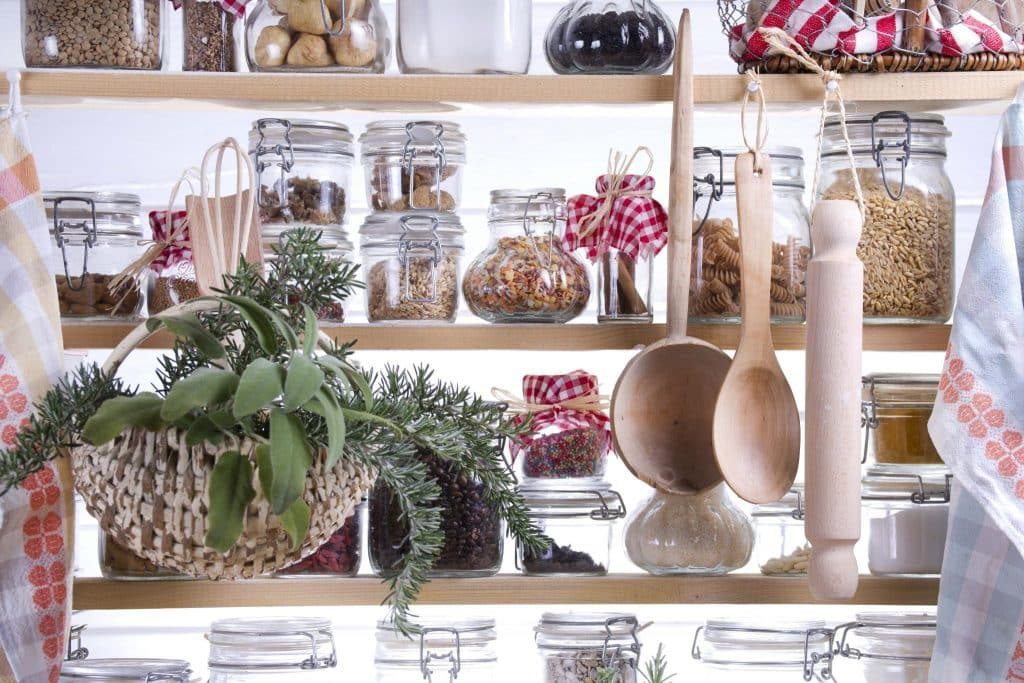
Again, your pantry might look very different, depending on the types of foods you like and the types of desserts and smoothies you make. The main thing to remember again is to choose whole foods, and make sure your pantry is stocked well enough to give you a few complete recipe and meal options.
Plan Your Meals In Advance
This falls under the same category as stocking your kitchen. By planning your meals in advance, you will avoid hungry impulse buys or too many takeout nights, and you will know what to stock your fridge and pantry with. This will also give you the opportunity to cook meals in bulk and store them in individual portions to eat throughout the week. You can also use leftovers to make something different for another meal. For example, if you cook a Sunday roast, you can use leftover meat slices in a salad the next day at work. You could also use the leftover meat in a homemade curry or stir fry. If you make guacamole for a bean salad or Mexican dinner, you can use the leftover as a snack to dip vegetable sticks in. If you do work a full-time job, there’s nothing more tempting than an easy takeout order if you get home and have to come up with something to eat, potentially meaning a run to the supermarket if you don’t already have your ingredients.

Eat Homemade Food
Again, this all falls together nicely. By planning your meals ahead and stocking your fridge and pantry, you will be able to plan to cook at home. By cooking at home, you can decide how healthy you want to make your food, and you’re going to know exactly what you are eating. Meals don’t have to be super tricky or time-consuming to be healthy. There are hundreds of quick, easy recipes available on websites and blogs all over the internet.
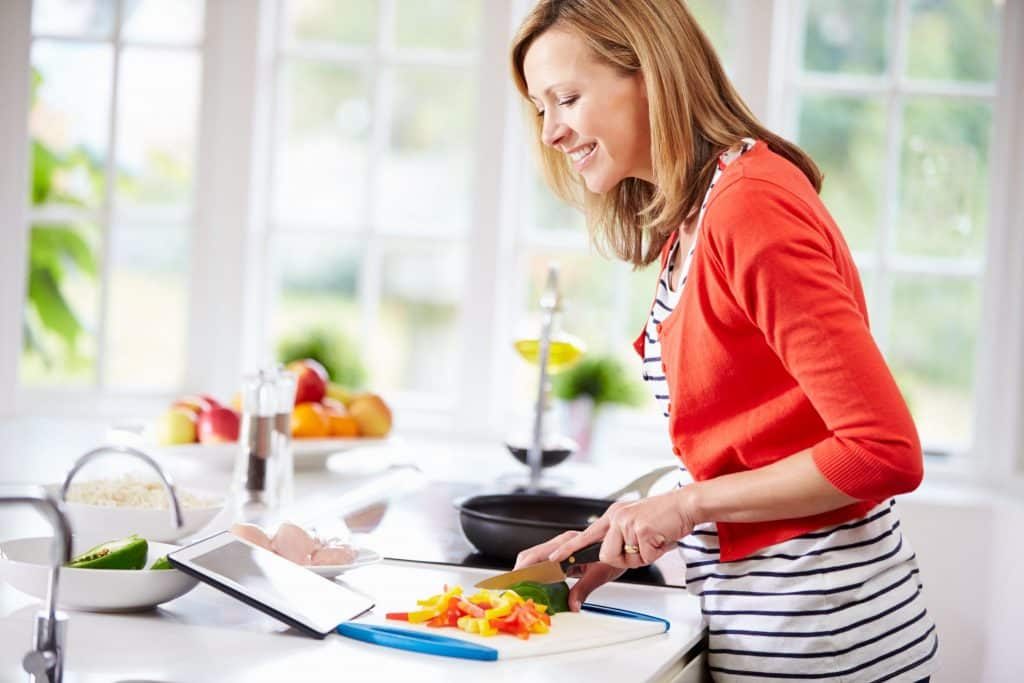
One thing you should keep in mind though is to limit the use of pre-made sauces and marinades. These tend to pack a lot of sugar, salt and other preservatives, and tend to be as bad as some takeout options. Again, this doesn’t necessarily mean you have to slave away for hours in the kitchen. A simple tomato pasta sauce can be whipped up and cooked in 20 minutes using blitzed tomatoes, whatever dried herbs you have in the pantry, garlic, onions and pepper. You can make large batches and freeze them to use in the future instead of going for a pre-made jar. Similarly, homemade salad dressings are extremely quick and easy, and you don’t even need to make them in advance. You can simply drizzle balsamic vinegar and olive oil over the salad, garnish with herbs, and add a little bit of sea salt and cracked pepper to taste.
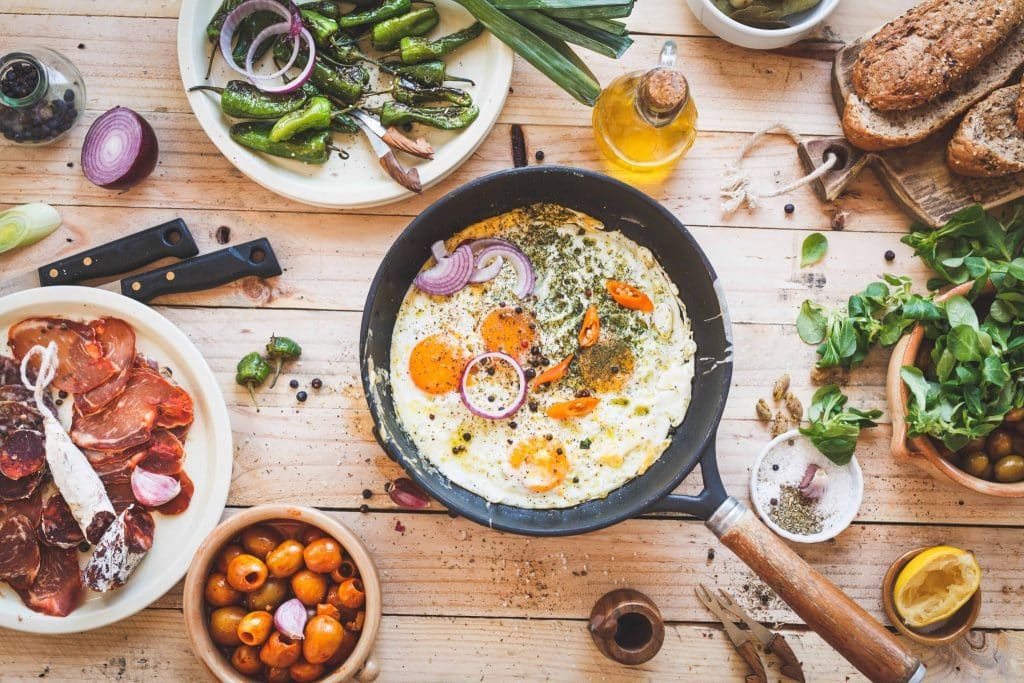
As well as cooking your meals at home, you should avoid buying supermarket cakes and candies. If you do have a sweet tooth and think that by restricting yourself from eating sweets would ultimately lead to a breakdown binge, you can certainly enjoy a little something sweet with your coffee or after dinner. The main thing is to limit the amount of sugar you consume and also don’t go overboard with your dessert portion sizes. To do this, you can make your own extremely healthy and sugar-free desserts at home, from chocolate protein balls, raw ‘cheeseless’ cake, and peanut butter cookies to vegetable-based brownies and dairy-free ice-cream. Again, there are so many healthy dessert bloggers out there, offering free whole food sweet recipes to choose from.
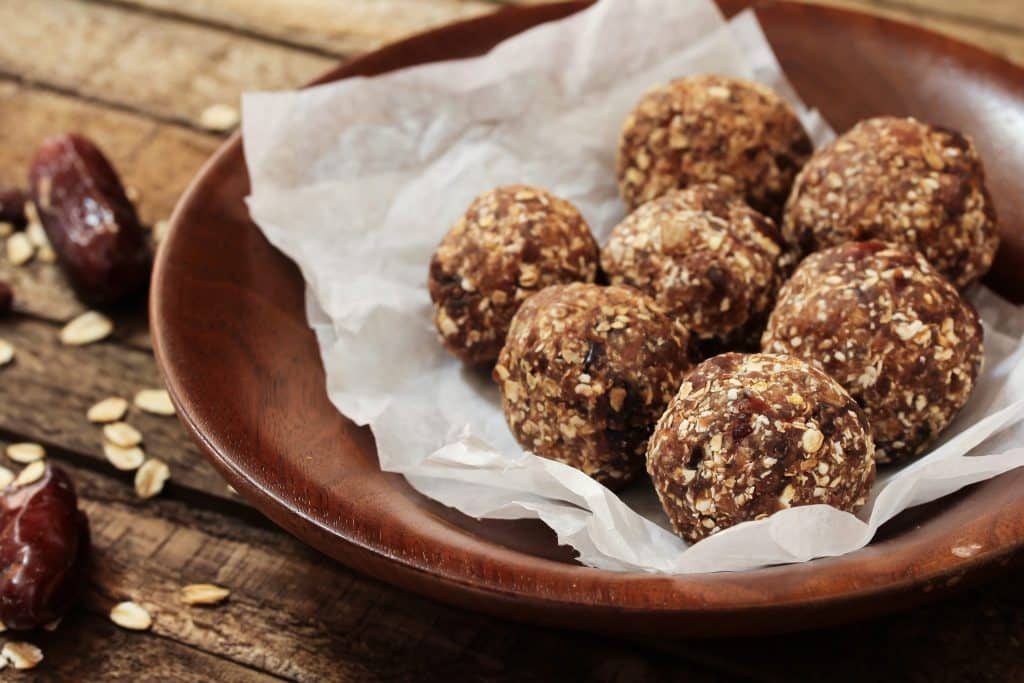
Take Advantage Of Your Freezer
A freezer is an incredibly handy tool for your new healthy lifestyle, but instead of stocking it with shop-bought ice-cream, cookie dough and frozen ready meals, use it to store your own homemade food and some handy ingredients. If you try cooking a few meals in bulk on weekends or days off, you can simply freeze them in portion-sized containers to later defrost when you need a quick, rushed meal.
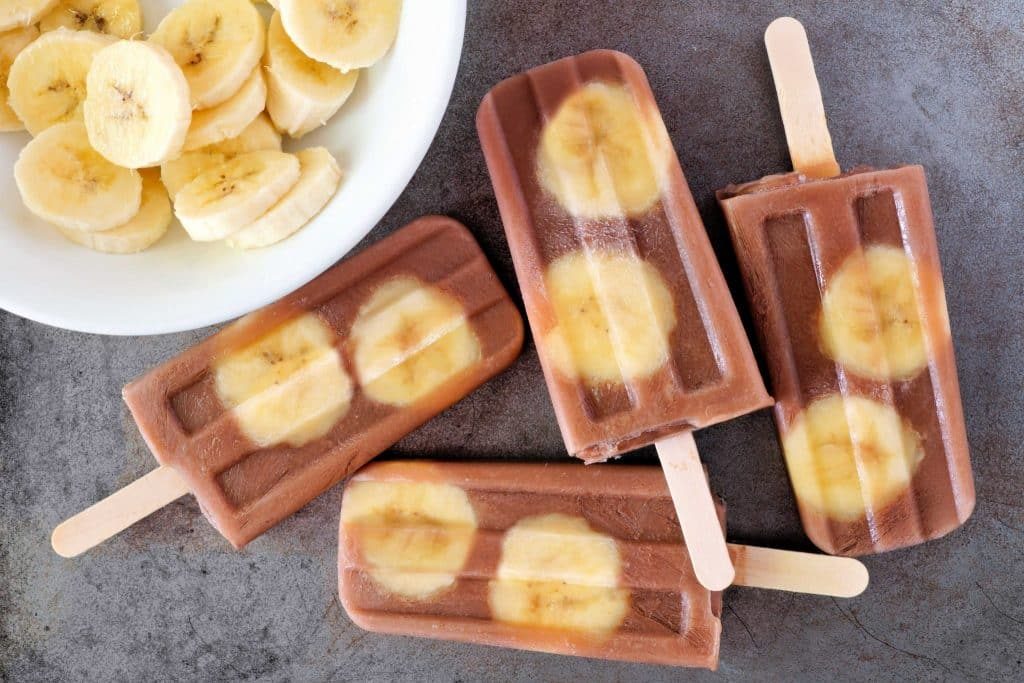
You can also make your own homemade ice-cream with bananas, almond butter, almond milk, cacao powder, vanilla extract and maple syrup as an emergency go-to sweet. You can also simply freeze pieces of peeled bananas in a container in the freezer to pop into smoothies. This will add thickness, texture and a nice cool temperature to the smoothie, eliminating the need for ice, sorbets or ice-cream. Freezers are great places to store other ingredients for cooking, such as fresh herbs all-year-round, which can be done quickly and simply, either dry in a bag, or using water or olive oil.
Think Of Food As A Whole
When deciding what to eat throughout the day, try to consider it as a whole, not as individual meals and snacks. Vegetables, for example, are incredibly healthy, but if you have vegetables only for breakfast, lunch and dinner, that is not a balanced diet, and will not supply you with the nutrients you need in a 24-hour period. So, for example, if you are having a vegetable soup for lunch, then you need to make sure you get plenty of protein, healthy fats, iron and calcium with breakfast and dinner. Always be aware of what you are consuming in a 24-hour period and ask yourself if you’ve included plenty of fiber, protein, healthy fats, complex carbohydrates, vitamins and minerals. Your daily intake of food should involve lots of different colors and textures from all of the five food groups. An example of one day might include eggs, avocado and seeds for breakfast, root vegetable soup for lunch, and spinach and other vegetables for dinner, either with a vegetarian protein option, fish or meat and freekeh or brown rice. Of course, you also need to make sure you are not over-consuming these healthy foods. Eat slowly and mindfully when you do sit down to eat and serve yourself a healthy sized portion. Vegetables should be the main feature on the plate, followed by protein and grains.
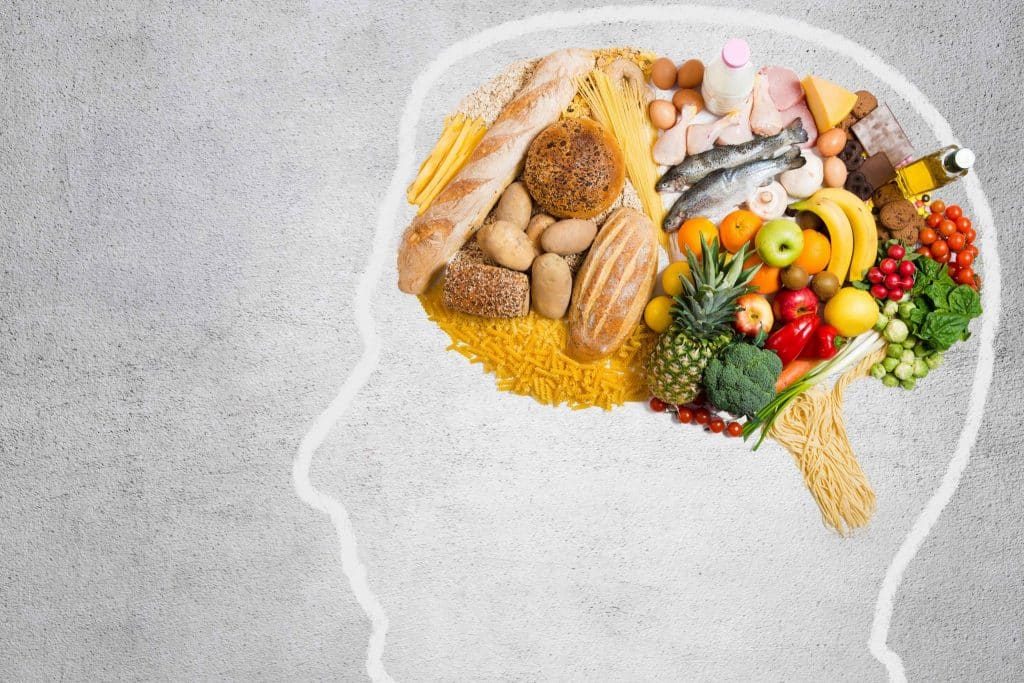
Choose Whole Foods And Ditch Processed Foods
One way to seriously minimize the risk of taking in unhealthy foods or additives is to go back to basics, choosing whole foods instead of processed or fast food. Besides buying and cooking your own fresh vegetables, meats, grains, spices, nuts and beans, make sure you read the ingredient list of any cupboard item you purchase. Opt for foods that don’t have artificial additives, refined sugar and vegetable oils, and when it comes to tasty treats, like cakes and cookies, always try to bake your own at home instead of buying pre-made goodies. Whole foods always contain the highest amounts of vitamins, minerals, dietary fiber and water, which the body knows how to use when it’s fed them in their natural form. Ultimately, these are the ingredients to keep your energized and healthy, and make you feel good after a meal, not guilty or bloated.

Eat Quick, Easy Breakfasts
For some people, especially people who perhaps don’t have the healthiest lifestyle or diet, mornings can be difficult and breakfast can be a hassle. If you had a late night takeout the evening before, chances are you will wake up feeling pretty rotten, tired and down. A great way to set yourself up for a healthy day is by starting from minute one. Have healthy options ready and waiting for you when you wake up, and ensure they are not going to be too difficult or time-consuming to prepare. Overnight oats or chia puddings that have fruit and fiber in them are a great grab-and-go option. Eggs with spinach or avocado create a super protein-packed breakfast, and a smoothie can be a delicious option to hide all sorts of nutrient-rich ingredients in. One example might include frozen banana, frozen berries, avocado, raw baby spinach leaves, oats, matcha powder, chia seeds, natural yogurt and coconut water, which will have you feeling like you can take on the world! It’s always a good idea to try and add at least one serving of vegetables into your breakfast. Starting the day healthy is the best way to motivate yourself to continue eating healthy for the rest of the day. You will have more energy to put into preparing your meals later, and you’ll feel happy and inspired.
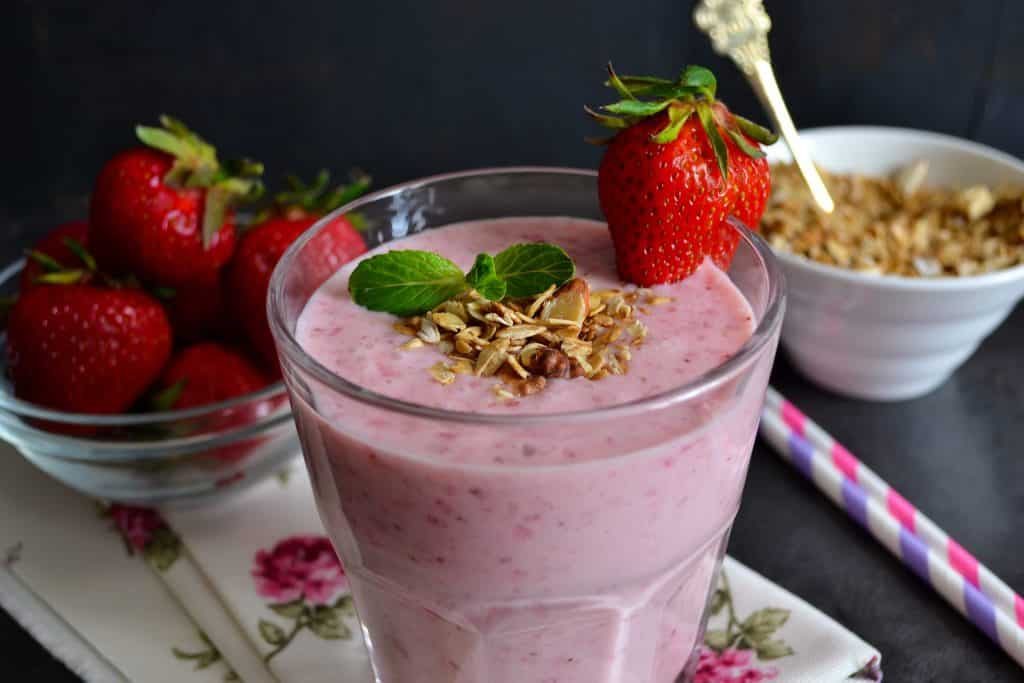
Cut Sugar, Cream And Milk Out Of Your Coffee And Tea
This is a definite when it comes to sugar, but cream or milk can technically be added, depending on how much fat you’ve already eating, or are going to eat, that day. Modern diets contain far too much sugar, and it can be extremely difficult to cut out, or even be aware of how much you are actually eating. Perhaps during a busy day at work, you run to the vending machine for a chocolate fix, or a soda to wake you up. Sometimes you simply forget all the things you’ve actually eaten in a day, which is why it’s important to cut out sugar wherever possible to minimize your overall intake.
A great place to start is with your coffee or tea, especially if you have several cups throughout the day. Coffee and tea on their own are actually very healthy, but what you add into them can turn them into unhealthy indulgences. You may be thinking, ‘there’s no way I’d like coffee without sugar’, but if you ask anyone who has forced themselves to stop taking sweetener in theirs, they’d almost always say it actually tastes better now (myself included!). If you take sugar and cream in your coffee, you can start by dropping the sugar and replacing it with a little bit of cinnamon, but keep the cream to begin with. Once you get used to that, you can ditch the cream, unless you don’t eat much fat on a daily basis, in which case, it might actually be good for you. If you drink milk-based coffees, like cappuccinos or lattes, then you are taking in a lot of extra calories each day. Start with a black coffee with warm milk on the side and add as much milk as you need, reducing it every day, until you only need a drop of cold milk, or you are converted to black coffee!

It’s important, however, not to become obsessed with food, or introduce any food restrictions into your diet. Like fad diets, this is not sustainable, and can lead to binge eating, guilt and unhappiness. If you eat a chocolate bar, or treat yourself to a cappuccino, don’t beat yourself up over it! Enjoy it, and just make sure it’s not a daily occurrence.


